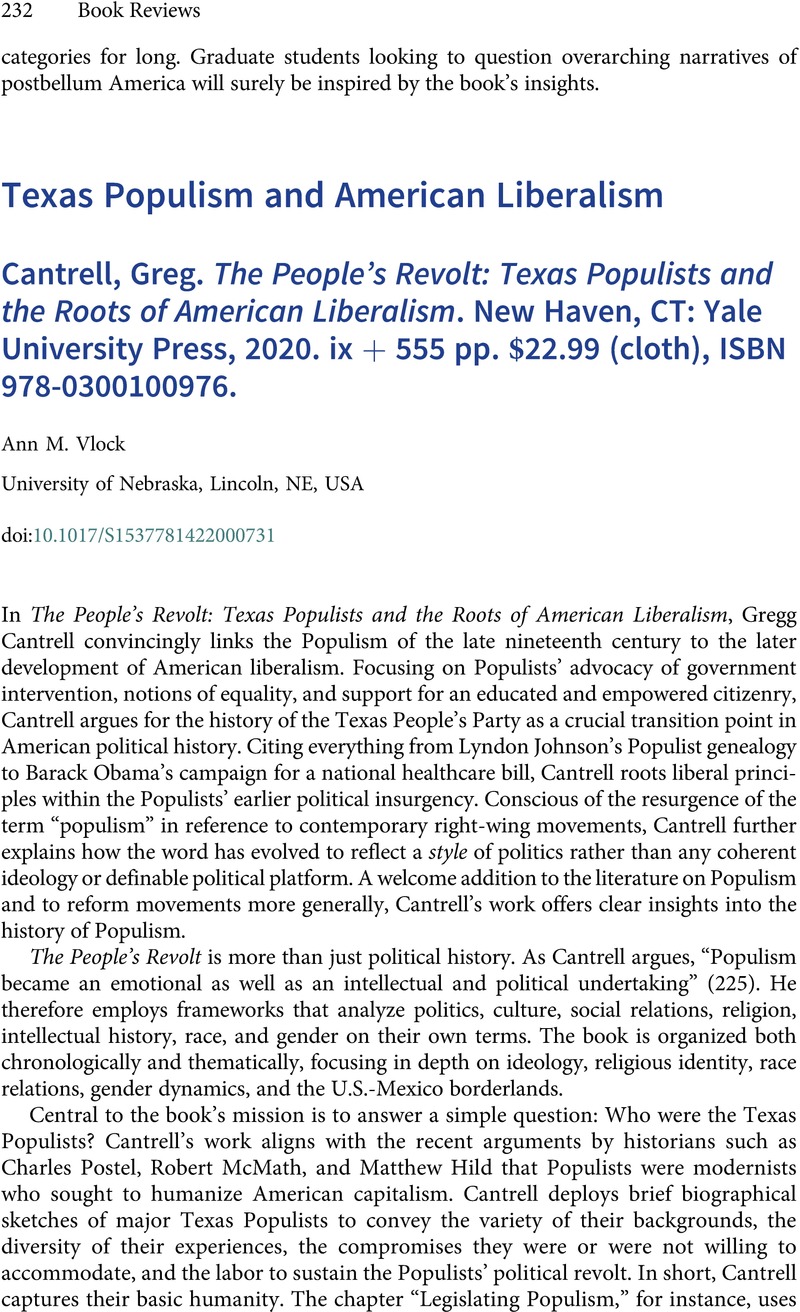No CrossRef data available.
Published online by Cambridge University Press: 22 May 2023

1 Robert C. McMath Jr., Peter H. Argersinger, Connie L. Lester, Michael F. Magliari, and Walter Nugent, “Agricultural History Roundtable on Populism,” Agricultural History 82 (Winter 2008): 1–35.